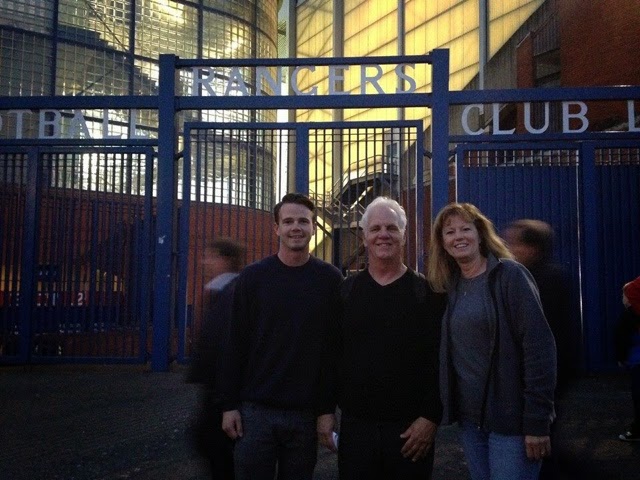Not only are the two teams bitter rivals but the cities themselves are also longstanding foes. The cities have been rivals forever with the modern rivalry stemming from a blue-collar, impoverished Glasgow versus a white-collar Edinburgh. Separated by just 45 miles the ill will is very real - even in 2014 a man from Glasgow sued a business in Edinburgh because he felt discriminated against by his choice of condiments. One city prefers ketchup and another mayonnaise for their fish and chips and charging this man $0.25 for ketchup in Glasgow ignited old tensions between the two cities - thus triggering the lawsuit.
The teams and fans are divided too along religious lines; one fan base is Catholic, the other Protestant. The Edinburgh Hibs even attract a strong Irish following, further fueling tension. After a huge fight at the stadium several years ago, there is no longer alcohol for sale and visiting fans are kept strictly divided by a strong showing of riot police - at least 50 cops partitioned the small but noisy "away" section. When the home team lost 4-0, it got ugly though profanity with a thick Scottish accent was actually quite endearing.
The coolest part of the game was probably catching a fan bus from St Andrews to the Glasgow, a 2.5 hour trip, with a bunch of die-hard Rmagers FC fans. We took in the full local experience, drinking beers with the club members before the game at a local pub adorned with posters of former Rangers FC legends all over the walls. They even taught us their fight song, which the fans sang amongst many other enthusiastic chants at the game. I have to say an NFL game does not come close to generating the same passionate enthusiasm as European professional soccer.
Above, the visitor section completely surrounded by police in yellow jackets and several rows of empty seats. This was not done out of abundance of caution. When the visitors scored a goal, it looked like a riot might break out over there!
Several hours drive from Kilconquhar, the MacFarlane clan traces their roots back to the late 12th century near Loch Lomond and the town of Arrochar. Over the centuries, the MacFarlanes had their ups and downs, at one point claiming Earldom of Lennox but after the entire family of the clan chief was murdered, fell into cattle thievery. During times of prominence, the MacFarlane clan had an army of four hundred men which fought against England under the Scottish crown. On our visit to Arrochar, we found the old clan meeting house ruins, dated several hundred years old surrounded by the graves of many clansmen, including that of William MacFarlane, the last government recognized clan chief who passed in 1866. Today, the clan chiefship is dormant, though it seems their is a movement only to have it restored. Exploring our ancestral lands and studying family history was without a doubt one the highlights of my entire trip.
Above, dad and me at a moment erected on the ruins of the MacFarlane clan former meeting house. And bello, mom and dad lead a hike near Arrochar. While beautiful, the cold was bone chilling and I can't imagine having to survive a winter here back in the 1400s...
Below, another shot of Loch Lomond. There is a tiny island on the lake that houses the remains of a small castle that was once property of the clan. Today, the island is completely overgrown and you can't see the castle from shore.
There was also supposed to be a MacFarlane clan museum in a bar out near Arrochar but all that was left of the museum was the sign out front.
On the way to Loch Lomond, we stopped at the William Wallace monument, a huge tower built to honor Scotland's most famous hero. After leading the Scots to an impossible victory against the English at the Battle of Stirling Bridge, Wallace rose through the ranks of the Scottish army. At the time, he was a young and experienced soldier of humble origins, yet his forces beat an English army that vastly outnumbered them. Ultimately, Wallace was captured, brutally tortured and killed for treason against England. If you've seen the movie Braveheart, you know his legend and reputation was well-earned.
You can climb to the top of the monument and inside is a museum. The view from the top looks out across the countryside. Below, the view from the monument looking down at the site of the Battle of Stirling Bridge.










No comments:
Post a Comment